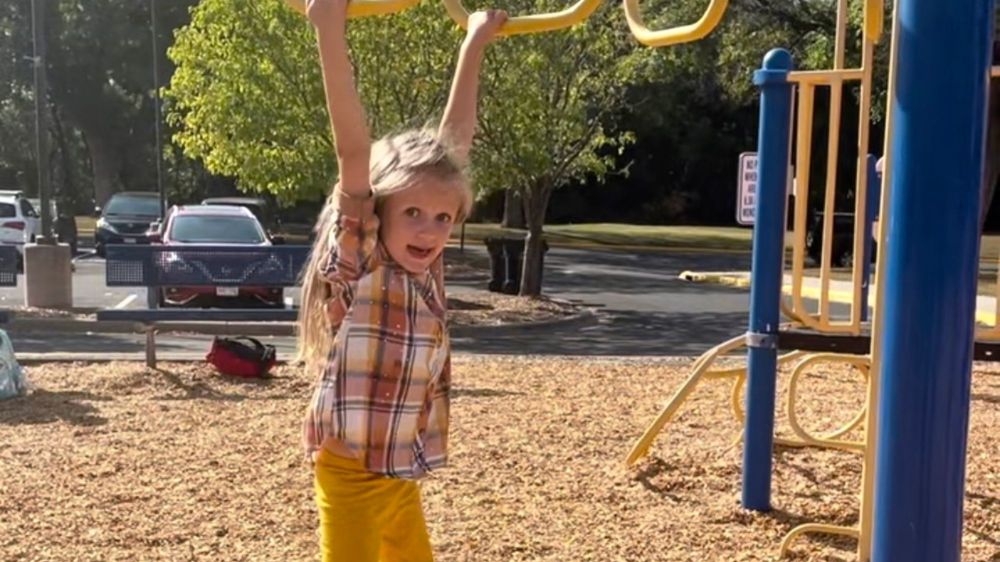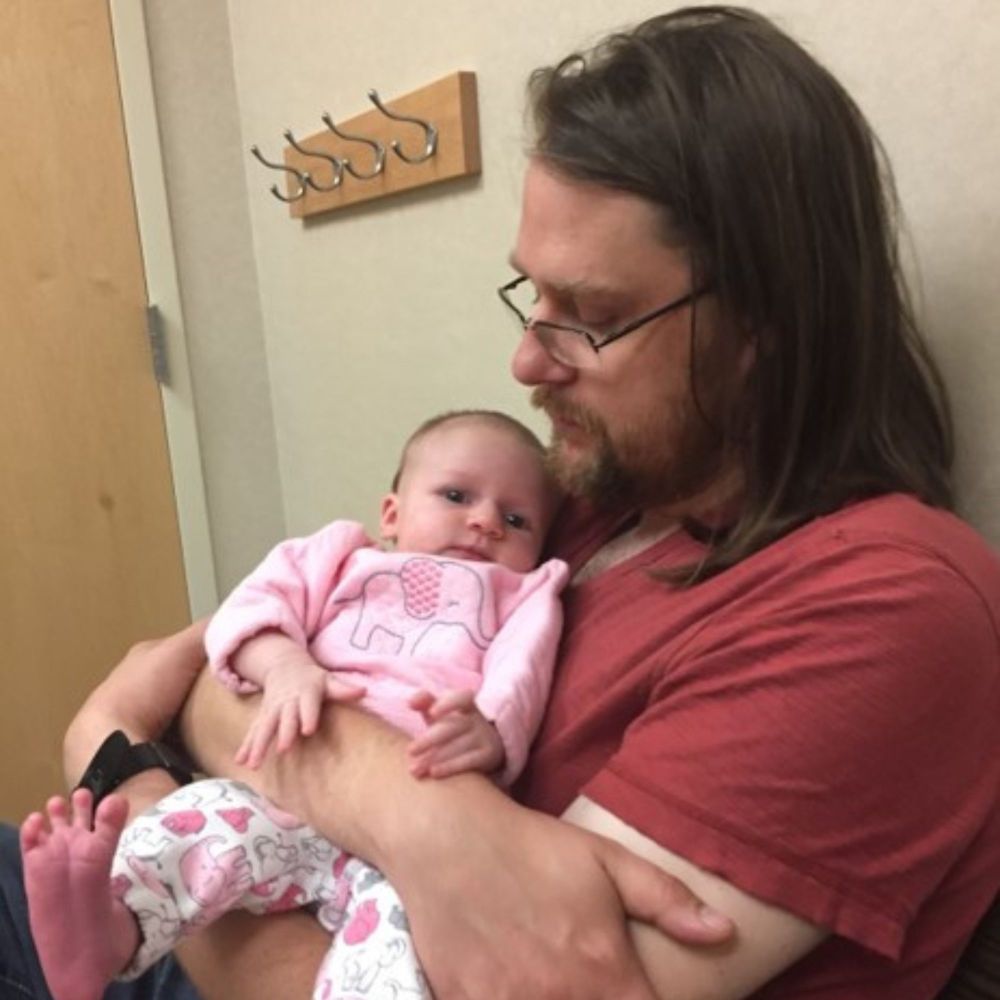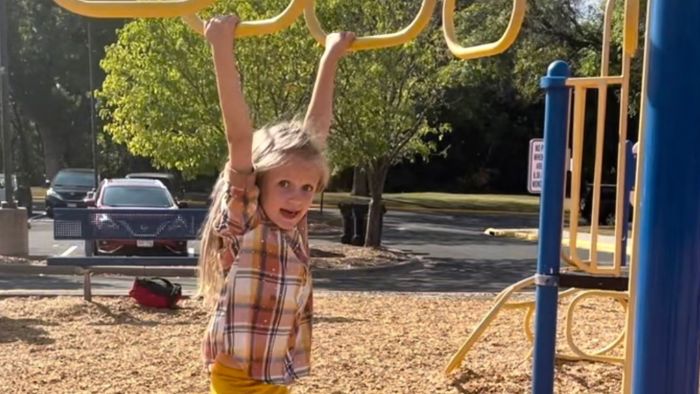
Lainey with a stuffy she received early in her care journey at Gillette.
Elaina Yaeger is a bright, active, creative, and resilient five-and-a-half-year-old. She’s also lucky. Born just days after genetic screening for spinal muscular atrophy (SMA) became the norm for newborns in Minnesota in 2018, Elaina – or Lainey – was the second child in the state for whom the test had a life-changing impact.
SMA is a rare genetic condition that affects the spinal cord’s motor nerve cells. The nerves affected by SMA don’t have enough of an essential protein called SMN and can’t carry signals from the brain to the muscles, causing the muscles to weaken over time.
“It was our pediatrician who reached out to us to explain that Lainey had tested positive for SMA,” her father, Rich, explained. "She recommended that we come to Gillette Children’s and said not to Google SMA, as we’d probably be freaked out by what we found.”

Because of early SMA treatment, Lainey stays active doing things – like climbing monkey bars – she enjoys.
Advocacy and Research Pave the Way
Thankfully, Lainey and her family didn’t have to wait long for clarity on SMA and her care plan. At seven days old, Lainey made her first visit to Gillette for a series of tests to ensure she was a good candidate for available treatments for SMA. Just a few days later, she received her first dose of Spinraza, a medication given by spinal tap that helps the body make more of its own SMN protein.
“Gillette did a lot of work to get SMA on the newborn genetic screening panel so that kids like mine were quickly identified and able to get treatment right away,” Rich says. “The research and advocacy happening at Gillette – especially through those parents who participated with their children in clinical trials, allowed Lainey to receive this treatment at a time when she was least likely to have lost any strength in her body.”

Lainey Yaeger with her father, Rich, in 2018.
Early Intervention is Key
Lainey was the first Gillette patient to receive Spinraza and Zolgensma, both new and expensive therapies, even with insurance. After receiving her initial treatment doses, Lainey and her family became regulars at Gillette, visiting to receive ongoing check-ups and additional required doses of Spinraza. These frequent visits led Rich to meet and form friendships with staff at Gillette he now calls co-workers. He joined the Gillette staff as a Learning and Development consultant and leads educational classes for his colleagues.
Today, Lainey’s visits to Gillette are down to once a year, and her SMA status is “unremarkable” - which is a good thing. She experiences a lack of reflexes in her knee, and while her doctor, Gillette pediatric neurologist Randal Richardson, MD, investigates its cause, it doesn’t stand in Lainey’s way.
In the meantime, she’s incredibly active, nursing some sore hands from playing on the monkey bars and her Ninja warrior training. Nobody would guess the path she’s taken or the years of advocacy and research that shaped her and other kids’ experiences with SMA.
Get Gillette Stories in your inbox!
Stay “in the know” with our Gillette Stories! Receive the latest stories and news from Gillette delivered straight to your inbox..
 Home Page
Home Page



